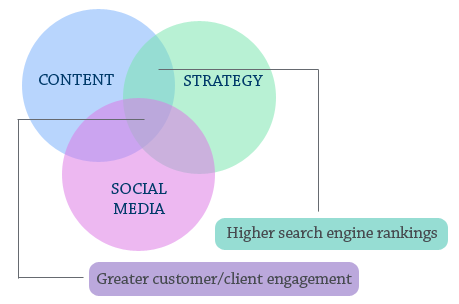This is a guest post from Carrie Oakley.
 Social profiles are more the norm than the anomaly today; most people have more than one because they don’t want to miss out on anything happening in social media. However, not everyone who’s online knows how to maximize the use of their social profiles and minimize the damage that they can cause; they sign up and start doing what everyone else is doing without realizing that information that goes online stays online for eternity and renders your life an open book and your privacy a thing of the past. There are no written rules or laws to use social networks, except of course that you don’t abuse or spam other people (you risk getting your account blocked). However, in order to protect yourself and prevent strangers from gaining access to your information, here are a few dos and don’ts to manage your personal social networks.
Social profiles are more the norm than the anomaly today; most people have more than one because they don’t want to miss out on anything happening in social media. However, not everyone who’s online knows how to maximize the use of their social profiles and minimize the damage that they can cause; they sign up and start doing what everyone else is doing without realizing that information that goes online stays online for eternity and renders your life an open book and your privacy a thing of the past. There are no written rules or laws to use social networks, except of course that you don’t abuse or spam other people (you risk getting your account blocked). However, in order to protect yourself and prevent strangers from gaining access to your information, here are a few dos and don’ts to manage your personal social networks.
Do’s
- Protect your profile adequately; this means you need to separate your friends into groups – family, close friends, and just acquaintances. Allow each group different levels of access; for example, your close friends can see all of your profile; your family is allowed access to your photographs and personal contact information; your acquaintances can see only relevant updates and information; and those not on your list of friends cannot see anything beyond your name and sex. Facebook has many privacy settings that you can use to protect your data from being used against you, so utilize them effectively.
- Keep monitoring updates from Facebook – there have been times when your privacy settings have reverted back to the “default” settings that Facebook deemed appropriate enough. Most options were opt-out instead of opt-in; so check your privacy settings every now and then to ensure that people can see only what you want them to see.
- Delete friends who are abusive and intrusive – you don’t have to inform them, and they will not know until they explicitly try to write on your wall or see your profile.
- Report as spam anyone who harasses you or forces you to friend them.
Don’ts
- Accept friend requests from people you don’t know – even if they’re friends of your friends, it’s not wise to put them on your list unless you know them personally.
- Do not Put up photos that are not appropriate for public viewing; they could come back to bite your butt if potential employers use them to discriminate against you in a job interview.
- Don’t say anything you don’t want the world to know – status updates and comments on your friends’ updates are public and could come back to haunt you if you’re not careful.
- Send out friend requests to all and sundry; ask politely, and if people ignore your request, don’t keep asking again and again.
- Intrude into the lives of people you hardly know; they may have accepted your friend request just to be polite, but if you see that they’ve blocked you from seeing their wall and photos, leave quietly instead of calling them out on it.
- Waste time playing games and checking out new applications all day – social networks could get addictive, so restrict the time you spend on them to an hour or less every day.
- Use social networks to spy on your spouse or significant other; in fact, it’s not wise to friend them in the first place – you may be married, but they deserve their space just as you do. If you get too snoopy and start questioning their every post or comment, your relationship could be in danger.
Social networks are supposed to make our relationships stronger and easier, not destroy them through nosiness and jealousy; bear this in mind when you sign on to use one.




